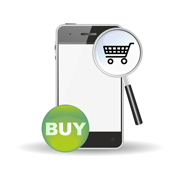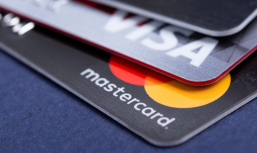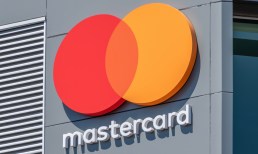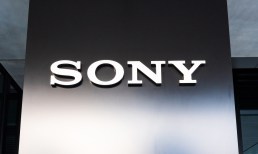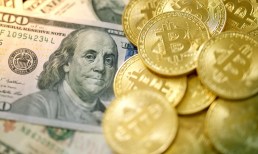Reader Warning: My usually sunny demeanor has been replaced by a little crankiness, given an unfortunate, unintended consequence of the snow and ice that has plagued Boston for what seems like months now. Last Tuesday, I slipped on the ice and broke my right wrist. And yes, I am right-handed. The surgery Friday and a big cast that keeps me from doing even the simplest things with my right hand have given me a tiny case of the grumps. However, thanks to dictation software, I am somewhat productive and thought I would use it to write my reactions to the stuff I have been reading about my two most favorite topics: NFC and mobile phones.
The week started with an interesting article on CNN.com in which a number of analysts and the new CEO of the ISIS mobile payment system were quoted about its impact on the world. The analogy was made that ISIS is to payments what digital recordings are to vinyl records. Aite Group had a graph in the article that showed mobile payments volume growing from $10 billion in 2010 to $250 billion in 2015. Wow! Then, the Web has been buzzing over the announcement made by Apple that they will enable their iPhones and iPads with NFC functionality this year. Finally, analysts are saying there is proof that mobile payments powered by NFC will take off this year. (Related Article: Google, Apple, ISIS: Which Will Ignite NFC Payments)
I have couple of observations.
First, let’s say that you completely concur that both of these announcements mean that NFC will ignite mobile payments. Does anyone really think that in four short years the growth in mobile payments volume will increase 25-fold (a compound annual growth rate of 190 percent)? Even with my case of the grumps, I find that figure so incredulous. The payments world version of the Immaculate Conception would have to happen in order to drive that kind of growth. Adopting and igniting anything new in the payment world takes time and has to solve the chicken-and-egg issues inherent in getting customers and merchants on board. Five years certainly is not enough time to create that kind of growth and ignition, which by the way provides the kind of real opening for solutions that are easier for consumers and merchants to use, like the Starbucks mobile payment solution that is being rolled out nationwide.
Second, I don’t understand why the chicken-and-egg issue gets completely dismissed when the topic of mobile payments arises. My colleagues and I are firmly convinced that mobile will transform payments in a way that we haven’t even begun to imagine. However, we also understand the complexities of igniting new payment types. Simply having iPhones and iPads that have the capacity to transact at a point-of-sale doesn’t mean that they can or will – or will want to. Merchants have to install new equipment, and consumers have to be trained to use it, which all takes time. Will Apple’s announcement cause merchants to think more seriously about upgrading their terminals sooner? Maybe for some, but the penetration of iPhones and iPads is very, very small. Just because you and the people you hang out with have them doesn’t mean that most people do. Just to throw a little data at this, Less than 3 percent of the U.S.’s 276 million wireless subscribers use iPhones, according to Rob Havasy, a business analyst at the Boston-based Center for Connected Health [1].
Third, the interesting application of NFC isn’t the ability to substitute a phone for a plastic card. There are millions of contactless cards in circulation today that no one uses, because there’s no inherent benefit in tapping versus swiping. The potential for NFC is having a really smart computer chip interacting with my really smart phone and a really smart merchant point-of-sale device that provides a better experience for me before, during and after my shopping experience. No one talks about that. Until a value proposition that wraps value around NFC is really brought to market, not only will consumers lack enthusiasm, other more nimble, IP-enabled solutions will have an opportunity to leapfrog that technology. (Related Article: Nokia, INSIDE Secure and More Discuss U.S. Business Case for NFC)
Advertisement: Scroll to Continue
Fourth – the other thing that no one talks about, maybe because it’s too scary – is the real advantage that I see Apple having over ISIS, Google, PayPal and even Facebook. There are more than 160 million iTunes users in at least 23 countries [2]. That makes Apple potentially one of the largest alternative payments networks out there. Can you imagine the persuasive case that Apple could make by simply offering to bring merchants their iTunes account customers? That is a much more persuasive case to merchants than bringing 17 million AT&T subscribers using iPhones enabled with NFC chips [3] in their hands.
Fifth, the other interesting thing about Apple is that they actually have their own spiffy mobile point-of-sale solution that’s now being piloted outside of Apple stores. It basically turns Apple devices into mobile electronic payments acceptance terminals. That really gives Apple an interesting advantage when talking to merchants about transforming transactions at the point-of-sale. They really have a pretty self-contained solution, which covers the spectrum of issuance to acceptance.
So, I completely agree that 2011 will be an important year for mobile payments/mobile commerce but not because NFC is or will drive it. I think that a number of solutions that have been quietly piloted, like the Starbucks barcode system, which will begin to emerge as serious contenders. In addition, I think we’ll begin to learn more about the plans that ISIS and other large players have around mobile. It’s going to be worth tuning into.
Sources
[1] http://mobihealthnews.com/6178/study-42-percent-of-u-s-uses-a-smartphone/
[2] http://techcrunch.com/2010/09/01/itunes-ping/
[3] http://online.wsj.com/article/SB10001424052748704030704576070090093187986.html
Karen Webster is the President of Market Platform Dynamics (MPD), a consulting firm that helps companies find, implement and monetize innovation. She serves as an advisor and member of the board for a number of companies operating in the payment, technology and digital media industries. More info here.
